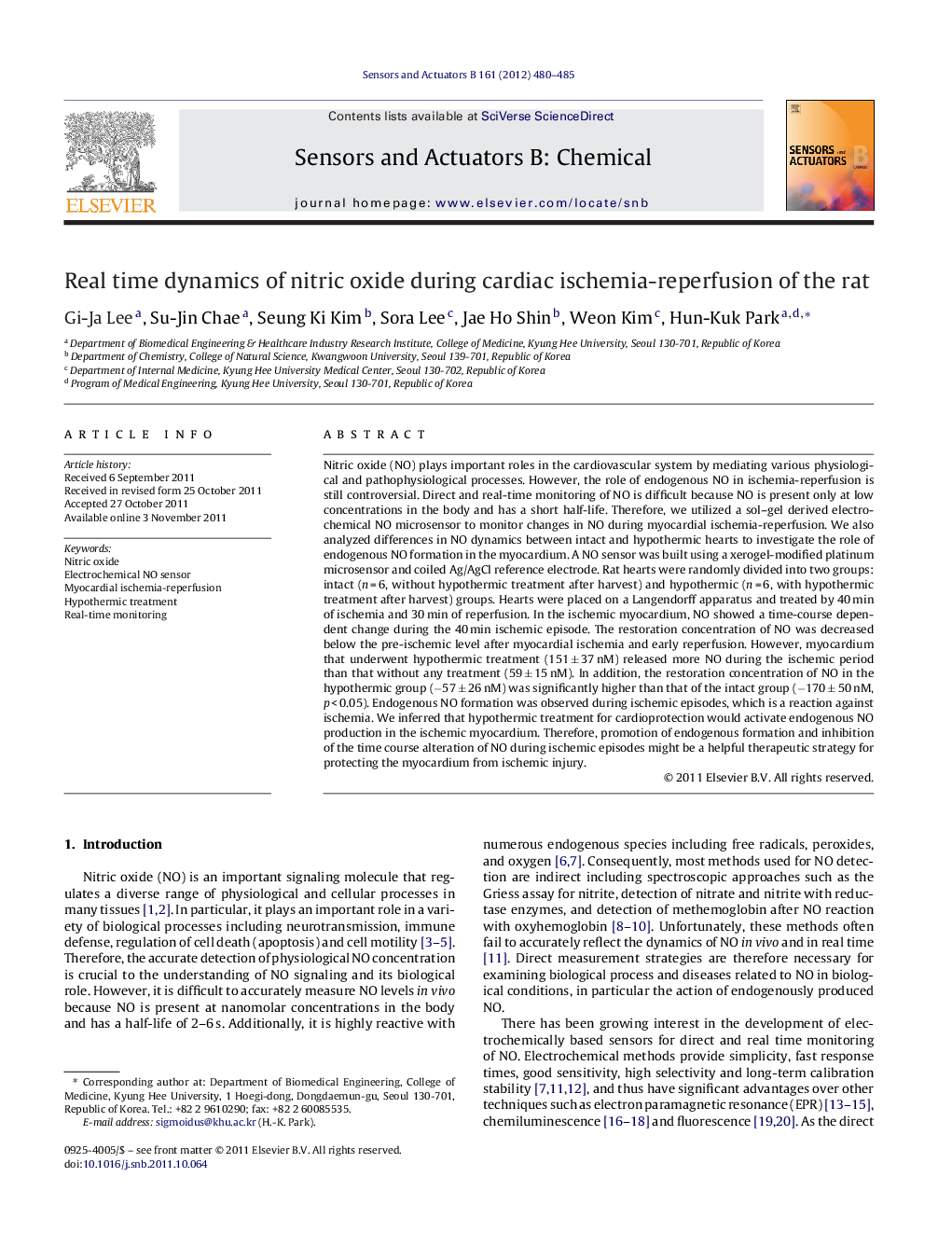| Article ID | Journal | Published Year | Pages | File Type |
|---|---|---|---|---|
| 743842 | Sensors and Actuators B: Chemical | 2012 | 6 Pages |
Nitric oxide (NO) plays important roles in the cardiovascular system by mediating various physiological and pathophysiological processes. However, the role of endogenous NO in ischemia-reperfusion is still controversial. Direct and real-time monitoring of NO is difficult because NO is present only at low concentrations in the body and has a short half-life. Therefore, we utilized a sol–gel derived electrochemical NO microsensor to monitor changes in NO during myocardial ischemia-reperfusion. We also analyzed differences in NO dynamics between intact and hypothermic hearts to investigate the role of endogenous NO formation in the myocardium. A NO sensor was built using a xerogel-modified platinum microsensor and coiled Ag/AgCl reference electrode. Rat hearts were randomly divided into two groups: intact (n = 6, without hypothermic treatment after harvest) and hypothermic (n = 6, with hypothermic treatment after harvest) groups. Hearts were placed on a Langendorff apparatus and treated by 40 min of ischemia and 30 min of reperfusion. In the ischemic myocardium, NO showed a time-course dependent change during the 40 min ischemic episode. The restoration concentration of NO was decreased below the pre-ischemic level after myocardial ischemia and early reperfusion. However, myocardium that underwent hypothermic treatment (151 ± 37 nM) released more NO during the ischemic period than that without any treatment (59 ± 15 nM). In addition, the restoration concentration of NO in the hypothermic group (−57 ± 26 nM) was significantly higher than that of the intact group (−170 ± 50 nM, p < 0.05). Endogenous NO formation was observed during ischemic episodes, which is a reaction against ischemia. We inferred that hypothermic treatment for cardioprotection would activate endogenous NO production in the ischemic myocardium. Therefore, promotion of endogenous formation and inhibition of the time course alteration of NO during ischemic episodes might be a helpful therapeutic strategy for protecting the myocardium from ischemic injury.
